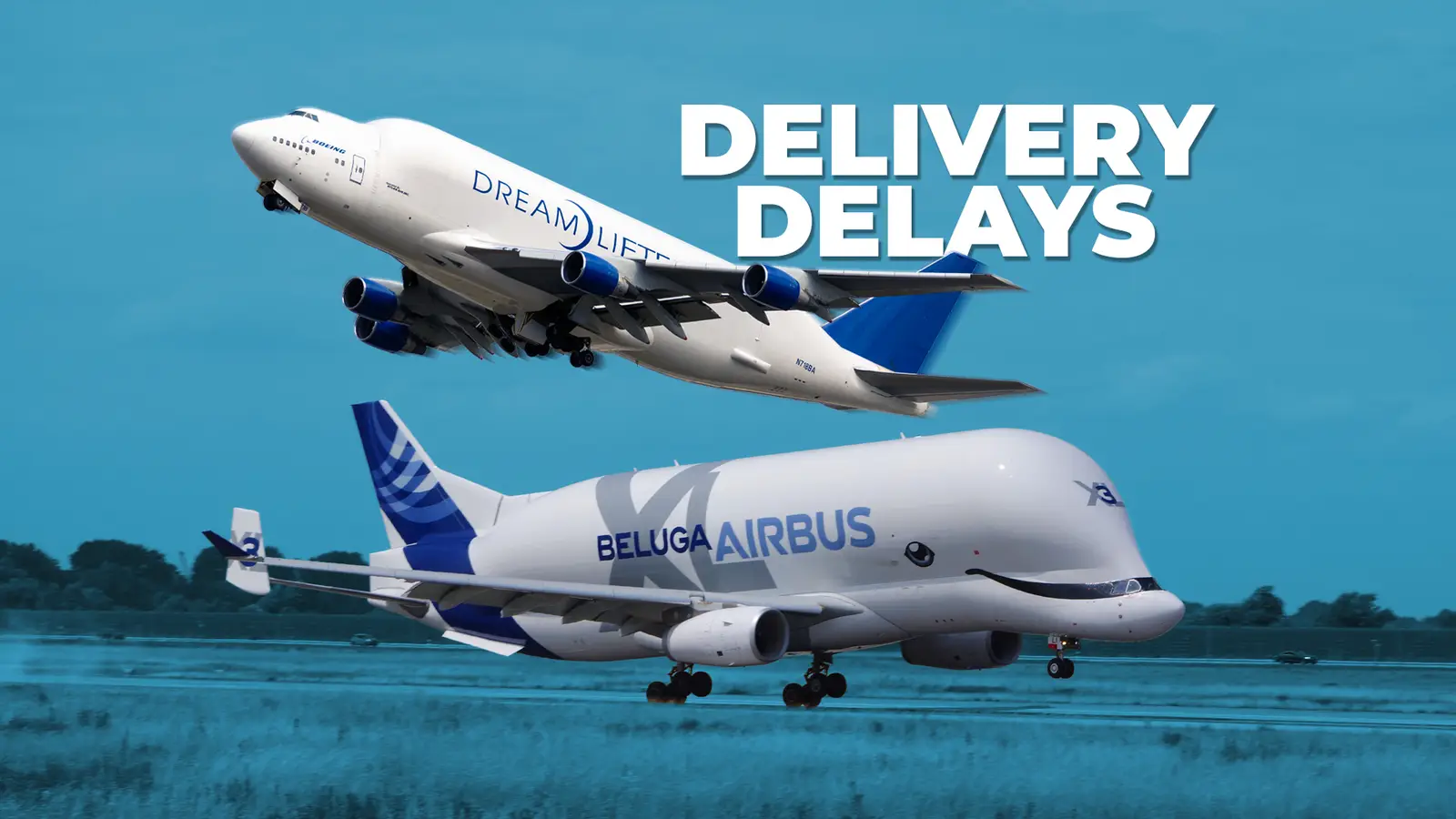
In plain language, yes. The conditions for a major chokepoint of commercial aircraft manufacturing output over the next few years are unfolding now. Air travel has come roaring back from the pandemic faster than anyone expected. The two companies that build almost all of the world’s large airliners, Airbus and Boeing, have been unable to increase output quickly enough to keep up.
Airlines are rushing to save money and fulfill their pledges to reduce carbon emissions by replacing outdated, fuel-guzzling models as they return to the capacity they had before COVID.The majority of the approximately 17,000 aircraft now in production worldwide are single-aisle narrowbodies, like the Boeing 737 MAX and Airbus A320neo series. As of now, many carriers who place orders are told that the earliest delivery window is toward the end of the decade.
Crawling Toward A Bottleneck
The trouble is that the factories and their suppliers are still rebuilding themselves after the COVID slump and, in Boeing’s case, a long safety-related crisis. When the pandemic hit, engine makers, parts suppliers, and specialist metal shops laid off staff, liquidated machines, and let inventories run out. Ramping back up has been slow and painful for many, and electronics suppliers are dealing with the same chip shortages that have impacted the auto sector.
Meanwhile, casting factories that shape the complex metal parts for engines are lacking both equipment and qualified technicians, and, in terms of alloys, acquiring some essential raw materials, such as Russian titanium, has become politically roadblocked, too. Airbus, which is in slightly better shape, wants to build 820 jets by the end of this year, yet its suppliers are quietly struggling, like engine maker Pratt & Whitney in the United States.
The 737 MAX’s quality-control oversight has been closely monitored by the Federal Aviation Administration, which remains cautious following the two deadly crashes in 2019. While many airlines are expecting dozens or even hundreds of deliveries, the FAA has limited MAX deliveries to just 40 aircraft each month for the foreseeable future. Boeing had to spend over six years reworking grounded 737 MAX jets that were in storage before it could begin delivering them again.
The new Boeing 777X isn’t anticipated to be delivered to carriers until at least next year. Because there is no meaningful third supplier, the squeeze is going to be felt by almost everyone. China’s Comac is selling only a handful of planes in its home market and hasn’t yet cleared Western safety approvals. The immediate consequences are expected to show up in price and are already affecting availability.
The Overworked Global Fleet
Instead of returning aircraft on time, airlines have had to go back to lessors and extend contracts for five-year-old Airbus A320s and Boeing 737s. Others are keeping planes ready for retirement in service as their successors are yet to arrive, like Lufthansa and its 747s. By remaining in passenger service, planes that were slated for retirement or cargo conversion raise the price of freighters and air-cargo rates as well by reducing supply across the board.
With airlines unable to get factory-fresh aircraft, they are leaning on lessors to supply any jet that can fly. That means a bigger slice of the world’s fleet will be rented rather than owned outright, and that income is driving up operating costs as well as airfares.
The overuse of weary planes results in more shop visits and engine overhauls, which boosts business for maintenance and spare-parts companies. However, those worn-out jets are worse on gas and reduce airline capacity with more downtime, meaning that carriers, flyers, and the environment are losers.
A Worldwide Problem
Airbus believes it can step up its supply chain to the high sixties or low seventies per month by late 2026, and Boeing is promising the FAA it will get its house in order and safely pump out the MAX to around fifty per month. Merging with aerostructures maker, Spirit Aerosystems, and changing its quality assurance practices may also nudge the Dreamliner higher in monthly deliveries.
Chip manufacturers that supply every industrial sector have been working toward increasing production. China’s COMAC hopes to win European certification for its C919 sometime around 2028, which would give airlines at least a modest alternative. The result is a temporary but very real bottleneck that favors early movers and deep pockets, while everyone else waits their turn in line for a shiny new jet.
By the end of the decade, if all goes to plan and there isn’t a new safety catastrophe or severe recession, the backlog should start to be manageable once more. Even so, the next four or five years look unlikely to change course. Passengers will keep flying, airlines will keep pushing for deliveries, and the production lines will keep straining.
Boeing’s Brain Drain
Consider an airliner as a puzzle composed of millions of parts from hundreds of businesses worldwide. The final product remains incomplete on the production floor when any one of those components is missing, faulty, or altered at the last minute. The 737 MAX and the 777X, Boeing’s two flagship programs, have become case-study examples of precisely that issue.
After the two tragic 737 MAX accidents in 2018 and 2019, the global fleet was grounded for almost two years while Boeing redesigned its flight-control software, the longest grounding of its kind in history. By the time it was cleared to fly again, Boeing already had hundreds of completed jets parked in storage.
The regular manufacturing line in Renton was forced to halt and restart because of months of rework and test flights before the 737 MAX could be approved to fly again. Mechanics were moved or laid off during the stoppages, while suppliers either slowed down or stopped operating their own plants, so Boeing lost a lot of that expert personnel due to a lack of work before it attempted to restart the line again.
Getting The House In Order
Spirit AeroSystems is a manufacturer that builds 737 fuselages, and around 70% of the parts that go into each plane. After ramping back to normal output, a new crisis occurred. In 2024, a door plug in an Alaska Airlines 737 MAX was ejected in flight. It was able to safely land, but the accident renewed scrutiny of Boeing’s production process. The process revealed that a technician at a Spirit facility had not installed four bolts necessary to secure the door plug in the unused emergency exit.
That prompted Boeing to begin a multi-billion-dollar merger that would reintegrate the subsidiary with its original parent company. Spirit was split off from Boeing when it first began doing independent business, but since that time, it has become a supplier for Airbus as well. That fact has made the merger more complex, but it is expected to be finalized by early 2026. Leeham News quoted Boeing CEO Kelly Ortberg as having told a Bernstein Conference in June 2025 that:
“We’re watching real closely to make sure that we aren’t over committing in terms of how many different seat configurations we can get certified in a certain period of time and the complexity. It’s something that we’ve got to watch, particularly the Dash 10s that have types of complex seat configurations.”
For the 737 MAX, Boeing and Spirit have decided on a slow but constant production pace, allowing the line to perfect every plane and suppliers to replenish backlogs of parts inventory. In addition to assigning full-time inspectors to the MAX line, the FAA is also revising its own protocols to allow it to approve specific quality documents rather than Boeing. These efforts will correct the safety and quality deficiencies, but hopefully also improve output in the future.
The Long Overdue New Widebody
The 777X faces a different, though similar, quagmire. It is a super-sized variant with a longer carbon-fiber wing, industry-first folding wing tips, a more spacious cabin, and the largest commercial jet engine ever built. It is also the first model-line update with bigger windows that was a clean-sheet design in airliner history. Early in flight-testing, the FAA found issues, and there remains a “mountain of work” to do to get it through the final stages, according to Ortberg.
The FAA has slowed the rollout at Boeing so auditors could go over the jet line by line and gather more test data. In the midst of that process, COVID hit, depleting engineering staff at Boeing and the FAA and delaying tests or inspections. The entire plan slipped by years due to the time the acute impact that the epidemic had on the program.
Both the 737 MAX and 777X programs share root causes in a supply chain that lost skills and inventory during the pandemic. Furthermore, the workforce has turned over faster than new mechanics can be trained, with the firm also facing regulatory slowdowns because of safety concerns.



